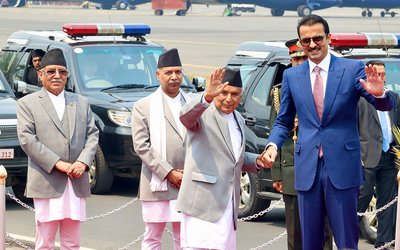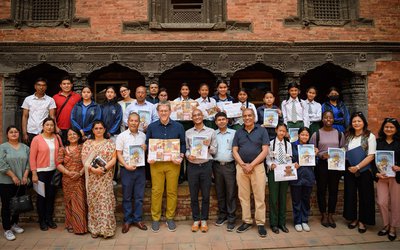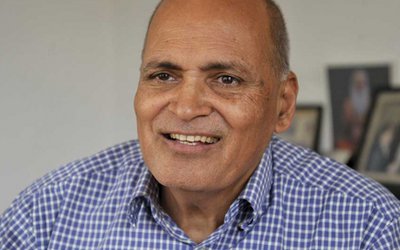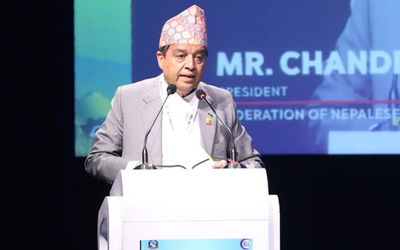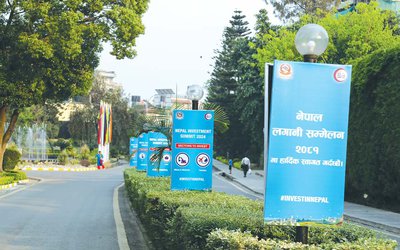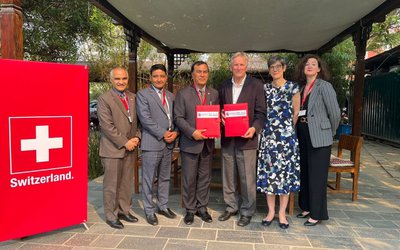Most of the South Asian countries, including Nepal, have seen a drastic change in their patterns of population growth in the last decade. However, eight South Asian countries, which have over 20 percent of the world’s population, are sure to face many challenges in the coming days.Studies have shown that most of the world population will grow in the less developed region and countries in the coming decades and they will have to face many burdens and difficulties in development and environment.
“What are the ... billion million populations ... for us?” They affect us and our livelihood. Thus, it matters to us. The trend indicates that the overall investment in family planning and reproductive health sector is still inadequate,” said Dr. Saramma Thomas Mathai, regional team coordinator and Maternal Health Advisor (UNFPA –APRO). “When a woman in South Asia becomes pregnant, her survival cannot be assured. Countries of South Asian region have a long way to go in meeting MDG targets. National figures mask intra-country differences, with maternal mortality and morbidity clustered around poor and rural populations. “Maternal mortality is an indicator of the poor functioning of the health systems, including poor infrastructure, lack of equipment and supplies, and shortage of skilled human resources. Inequalities in access are clear by the huge differentials in utilization of skilled birth attendants and life saving caesarean sections in case of complication.”
At a time when there is a big need of investment in the family health and reproductive health sectors, it is difficult to make progress in the population management. Although Nepal too has invested a lot of resources in the areas of rural health infrastructure to provide facilities in family planning and reproductive health, they are still inadequate and insufficient.
The situation is similar to all the countries in the region. “Despite improvement in the maternal mortality, the life of pregnant woman is still unsafe in the Maldives,” said Uz Fathimath Dhiyana Saeed, SAARCsecretary general. “In terms of infrastructure, we have built a lot in rural parts of Nepal, but it is difficult to claim that they provide quality services as well as offer reproductive health services to all needy people,” said Dr. Inu Aryal, head of family division at the Ministry of Population and Health. “There is still a long gap in supply side.” At a program organized by the International Council on Management of Population Program (ICOMP) in collaboration with South Asian Association for Regional Cooperation and the Population Association of Nepal, with support from the David and Lucile Packard Foundation and the Asian Forum of Parliamentarians on Population and Development, government representatives, parliamentarians, program managers and technical experts from SAARC countries raised various issue related to family planning and reproductive health.
“We need to focus on addressing the needs of men and women from South Asian Region, so that concerted efforts and interventions can be implemented towards achieving the ICPD and Millennium Development Goals (MDGs),”said Dr.Wasim Zaman, executive director, ICOMP, Malaysia. “The aim of the two day program is to enhance the engagement of the parliamentarians and policy makers of South Asia along with the government representatives of policy makers, program managers and technical experts from the countries of SAARC region.”
Issues at stake are fertility trends, age at marriage, sexual and reproductive health behavior of adolescents and young people, contraceptive prevalence rates, reproductive health and family planning needs of poor segments of population, policy changes and its implications. Reproductive health is also regarded as the right of a woman. “The government must protect the reproductive rights of women by providing basic health services and family planning methods,” said Sapana Malla Pradhan, member of Nepal’s Constituent Assembly. The existing huge number of young and adolescent and youth population and growing numbers of aging population are two major challenges that need to be addressed. There is the need of investment. Despite increase in the use of contraceptives and distribution centers, there is a huge gap in the supply side. As public bodies are responsible for the free supply of contraceptives, there has been mismanagement all the time.
Although even the private sector is involved in supplying contraceptives, the unmet need in Nepal is still over 40 percent. In South Asia, the percentage remains more or less the same. Here is the need for intervention. “We are still unable to meet the family planning needs of young and adolescent people whose role is important in population growth,” said Dr. K.G. Santhya of the Population Council of India. “If we are unable to meet the family planning needs of adolescents, the current population trend may go in a negative way.”
Experts argue that failure to meet unmet demands of family planning and contraceptives will bring unprecedented demographic upheaval. At the program inaugurated by Chairman of Nepal’s Constituent Assembly Subash Chandra Nembang, experts and parliamentarians shared their experiences in Regional Consultation with South Asian Parliamentarians and policy makers on Family Planning and Reproductive Health.
Parliamentarians and delegates from SAARC countries attending the South Asian regional consultation on family planning and reproductive health underlined the importance of population management to meet the Millennium Development Goals (MDGs).
“At a time when the countries of the region have been facing many challenges to manage the population, these kinds of consultations will provide a common platform to share the knowledge and experiences,”said chairman Nembang. “This is very timely and highly significant.”
One of the aims of the regional consultation was to increase commitments and adequate funding for addressing the unmet needs of the deprived and marginalized groups of population, including adolescents and youths in South Asia.
Out of ten populous countries in the world, South Asia has three: India 1,224,614,000, Pakistan 173,593,000, and Bangladesh 148,692,000. According to an estimate, even Nepal has over 28 million population. Bhutan with over 700,000, the Maldives with over 400,000 and Sri Lanka 212, 83,913. According to an estimate, Sri Lanka has an estimated growth rate of 0.934 with infant mortality at 9.7 in 1000 and total fertility at 2.2.
Afghanistan has one of the highest fertility rates with 5.39 and growth of 2.375. Infant mortality rate is 149.2 deaths in 1000. Bhutan’s growth rate is 1.201 with total fertility 2.2 and infant mortality 44.48 per 1000. The population growth of Bangladesh is 1.566 with 2.6 fertility and infant mortality 50.73 in 1000.Pakistan’s growth rate is 1.573 with 3.17 fertility and children and infant mortality 66.26 per 1000. Nepal’s growth is at 1.596, fertility 2.47 children, infant mortality 44.54 and the Maldives has growth at 0.151 and infant mortality 27.45, with total fertility 1.81. India’s population growth is 1.344, infant mortality 47.57 and fertility 2.62 children.
According to the data, the Maldives has 400,000 estimated population of the country. Similarly, Afghanistan, 298, 35392, has the highest maternal mortality rate and high fertility rate. Sri Lanka is one of the countries in the region which is heading to negative growth.All these countries have been facing similar problems. The world population will hit 7 billion this year and will add 2.3 billion more by 2050, according to US researchers. As the population management becomes a major challenge, there is the need of strong political commitments and adequate funding to tackle it. Recent studies point out that nearly all of the 2.3 billion projected increases will be in the less developed regions, with nearly half in Africa.
These sizable increases represent an unprecedented global demographic upheaval, according to David Bloom, Clarence James Gamble Professor of Economics and Demography at the Harvard School of Public Health, in a review article published in Science on July 29, 2011.
The world's population has grown slowly for most of human history. It took until 1800 for the population to hit 1 billion. However, in the past half century, population jumped from 3 to 7 billion. In 011,approximately 135 million people will be born and 57 million will die with a net increase of 78 million people.
Already strained, many developing countries will likely face tremendous difficulties in supplying food, water, housing, and energy to their growing populations, with repercussions for health, security, and economic growth.
While the percentage of elderly people in nearly every nation is growing, this aging trend is particularly stark in parts of Asia.
Projections indicate that the portion of the population age 65 and older will more than triple in China, and India. This demographic shift is coinciding with dramatic economic and social changes in Asia, including changing family structures and large-scale migrations from rural to urban areas.The two-day regional consultation, among others, discussed the key issues like fertility trend analysis, age at marriage, sexual and reproductive health behavior of adolescents and young people, contraceptive prevalence rates, reproductive health and family planning needs of poorer segments of the population, policy changes and their implications.
“The speakers highlighted the lack of appropriate policies to meet the needs of the young people in the areas of sexual, reproductive health and rights. They also discussed ineffective decentralization and devolution of power for family planning and reproductive health and gap between policies/laws and family planning and reproductive health programs especially for young people,” said Bhagabati Shedhai and Tej Adhikari presenting their views.
The current trends have raised critical questions about how nations can develop policies that best support public health and economic well-being in large and growing populations at older ages and adolescence. The time has come to act now. The longer the governments wait to respond, the more constrained their choices will be.“Governments in the South need to stress inter-sectoral collaborationfor quality of Reproductive Health and Family Planning policies and programs. There is also the need of a mechanism to monitor, implement and develop programs for unmet needs of contraceptives as well as family planning,” said Shiv Khare, executive director of Bangkok based AFPPD.
South Asian countries still have time to determine the best ways to respond to the unfolding demographic transformation but they need to act.“We need to have a collective voice in the parliament to raise the issues of family planning,” said Norbu Wangzom, member of National Assembly of Bhutan. Members of parliament, policy makers and government officials agree that the present success, whatever little it may be, in demographic transition needs to be backed by strong family planning programs in reproductive health sector. This requires investment.
- QATAR AMIR’S STATE VISIT: Five Agreements
- Apr 28, 2024
- TANAHU HYDROPOWER PROEJCT: A Significant Achievement
- Apr 15, 2024
- AMBASSADOR HANAN GODAR: Sharing Pain With A Nepali Family
- Mar 30, 2024
- VISIT OF KfW AND EIB TO NEPAL : Mission Matters
- Mar 25, 2024
- NEPAL BRITAIN SOCIETY: Pratima Pande's Leadership
- Mar 24, 2024

